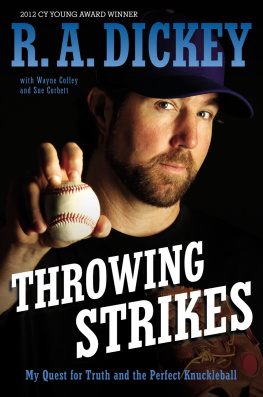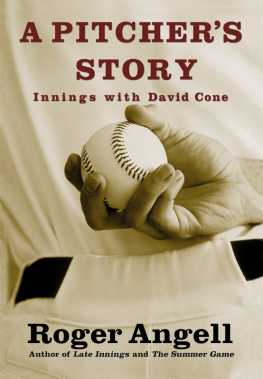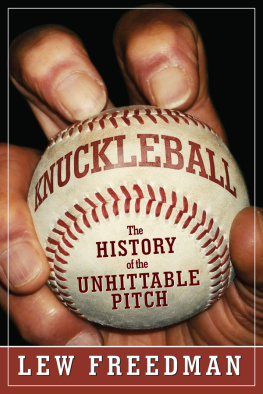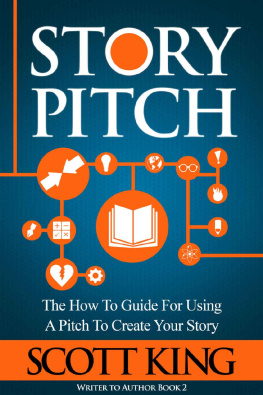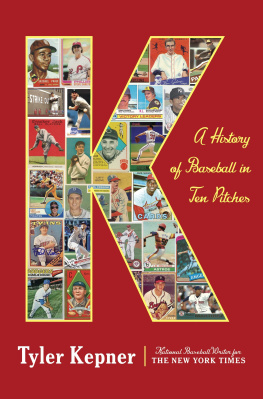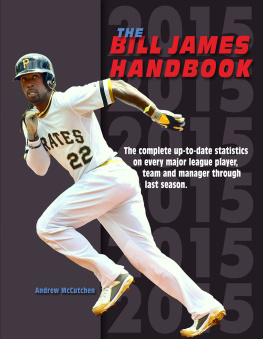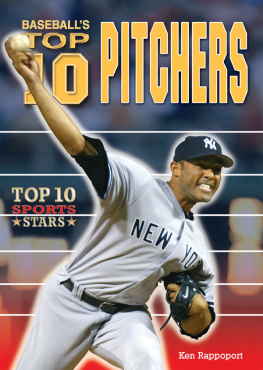Foreword by
Phil Niekro
H OUGHTON M IFFLIN H ARCOURT
Boston New York
2011
Copyright 2011 by Tim Wakefield
All rights reserved
For information about permission to reproduce selections from this book,
write to Permissions, Houghton Mifflin Harcourt Publishing Company,
215 Park Avenue South, New York, New York 10003.
www.hmhbooks.com
Library of Congress Cataloging-in-Publication Data
Wakefield, Tim.
Knuckler : my life with baseball's most confounding pitch / Tim Wakefield with Tony Massarotti.
p. cm.
Summary: "The story of one of baseball's most unlikely successesa knuckleball pitcher who
has outlived, outmatched, and outsmarted the dancing pitch"Provided by publisher.
ISBN 978-0-547-51769-8 (hardback)
1. Wakefield, Tim. 2. Baseball playersUnited StatesBiography. 3. Pitchers (Baseball)United
StatesBiography. 4. Pitching (Baseball)Anecdotes. I. Massarotti, Tony. II. Title.
GV 865. W 3347 A 3 2011
796.357092dc22 2010049848
Book design by Brian Moore
Printed in the United States of America
DOC 10 9 8 7 6 5 4 3 2 1
For my grandfather, Lester, my biggest fan, who passed away right after I was drafted and never got the chance to watch me play professionally; for Red Sox fans, who have given me support, love, and understanding over the past 16 years and who understand me and the knuckler; and for my wife, Stacy, for her support, love, and sacrifices through the grind of the many seasons that we've been married. She provides a true testament to how strong an athlete's wife needs to be while we dedicate our time to our profession. She has been my rock through it all. I love you. (TW)
For Natalie, who continues to stand by the world's biggest knucklehead. (TM)
Foreword
W E'RE A SMALL group to begin with, so when I tell you that Tim Wakefield is one of the best knuckleballers of all time, I suppose that leaves some room for interpretation. So what I'll tell you instead is that Tim has been one of the best pitchers in the game for a long time, just so that nobody gets bug-eyed from focusing on the knuckleball for too long.
We're different, of course. Sometimes it feels like people see us as freaks or oddities. But I've always thought that an effective knuckleballer brings so much more to the table than a conventional pitcher, and Tim is a great example of that. Look at all of the things he's done over his career. He's been a starter and a closer, and he's pitched long relief, middle relief, and set-up. I bet there isn't a pitcher in the game who has done all of those things during the time he's been in the big leagues. I'm not sure how the Red Sox look at him, but I don't know where the Red Sox would be if he hadn't been on their pitching staff for the last 16 years.
Let's make this clear: knuckleballers aren't superstars. Tim, especially, was rarely the kind of pitcher who got front-page billing during any year, but when the season ended, I bet the Red Sox and everyone else looked up and gave thanks that they had him. The numbers are one thingand those speak for themselves. But one thing I told Tim early on is that he needed to have his spikes and glove ready every day, because a knuckleballer is always in a position to help. We can pitch in between starts, on short rest, on no rest. He did that as well as anyone. He's been like a 26th man for the Red Sox during his entire time there.
Here's something else I told Tim early in his career, when he was learning about the knuckleball, learning to trust it: "If you ever lose confidence in this thing, they're going to have to bring you to the hospital." He looked at me and asked why. And that's when I told him: "Because they're going to have take my size 11 shoe out of your ass."
Tim laughed at that, but I'm proud of what he's become during his career, on the field and off. He's as good a person as he is a pitcher. I could see that he had potential from the first time I saw him pitch, in the 1992 playoffs against the Atlanta Braves team that I played with almost my entire career. Tim was with Pittsburgh then. I remember watching the game from the stands and seeing Tim's knuckleball floating in slow motion, and I remember thinking, This kid is good. I had no idea then that we'd end up meeting, that the Red Sox would ask me to help, that I'd become like a mentor to him, and that we'd eventually become peers.
As knuckleballers, we really have only ourselves to rely on. Nobody else understands the pitch the way that we do. I had the chance to pitch with Hoyt Wilhelm for a brief time with the Braves in 1969, and I remember speaking with Wilbur Wood during the 1970s about the challenges of pitching on short rest. Guys like Wilhelm, Tom Candiotti, Charlie Houghwe're all in the same small fraternity. I was especially lucky because one of those guys was my real brother, Joe. We all connect with each other in way that only we can understand, and I think we're all as proud of the others' careers as we are of our own.
People ask me sometimes about the future of the knuckleball, about where the pitch is going, and I'll tell you the same thing I tell them: I'm not sure. But isn't that right? We don't always know where the pitch is going. We just throw it and trust it. Baseball evaluators certainly don't go out scouting for knuckleballers, but I'm sure the pitch will endure. It always does. I'm not sure who will be the next guy to throw it effectively or where that is going to be, but someone will throw it and hand it on to the next guy, the way Wakefield has for the last two decades or so.
And when that guy comes along, I know he'll learn something from Tim Wakefield the way Tim learned from me, Joe, and the others, because Tim stopped being a student of the knuckleball a long time ago.
And he became a teacher.
Phil Niekro
Autumn 2010
Introduction
T HE KNUCKLEBALL , I know, is a big part of the story. It's a big part of who I am. But I've never really thought of myself as being different, not really, not in comparison to other pitchers and certainly not in comparison to the people who come watch us play.
What I am, I believe, is someone who got a bunch of second chances and took advantage of them, who persevered through adversity. I hope that comes through as much as anything else in this book. I think there are lessons in that for all of us. I know there were for me.
People look at the knuckleball differently than they do other pitchesthey're fascinated by it. I understand why. People have asked me all kinds of questions about the knuckleball over the yearshow I grip it, why it does what it does, whether I ever get frustrated by it. That last question is one I've always found interesting, because people sometimes talk about it as if it were a person, as if I had a relationship with it. No one would ever ask Pedro Martinez about his changeup or Josh Beckett about his curveball the same way they ask me about my knuckleball, but I also understand there are differences. If one pitch isn't working for those guys, they can try something else. I really can't. For roughly 20 years as a professional pitcher, I've thrown the knuckleball on almost every pitch. It's worked for me most of the time. When it hasn't, I've simply chalked it up to the balancing forces of baseball, the way any pitcher would.
I don't resent the knuckleball. In fact, it's quite the opposite. I love the knuckleball. It has given me a long career to be proud of and provided for my wife, Stacy, and two children, Trevor and Brianna. It's allowed me to meet people I might never have met, experience things I might never have been able to experience, and help people in ways I might never have been able to help.
Before I joined the Red Sox in 1995, I thought my career might be over. I was still learning about the knuckleball, and I knew almost nothing about Boston or about the Red Sox other than what I had learned from one of my college roommates, Tom Krystock, who was a Red Sox fan. Tom was from Connecticut and convinced me to go with him to Fenway Park, where we took in a handful of games. I never imagined then that Boston and Fenway would become my home, that I would pitch in nearly 300 games there and be part of two world championship teams. And I never imagined that Boston would accept me the way it has, that the people there would welcome me as part of their community, that Boston would be as much a home to me as Melbourne, Florida, where I grew up and played college baseball.
Next page

